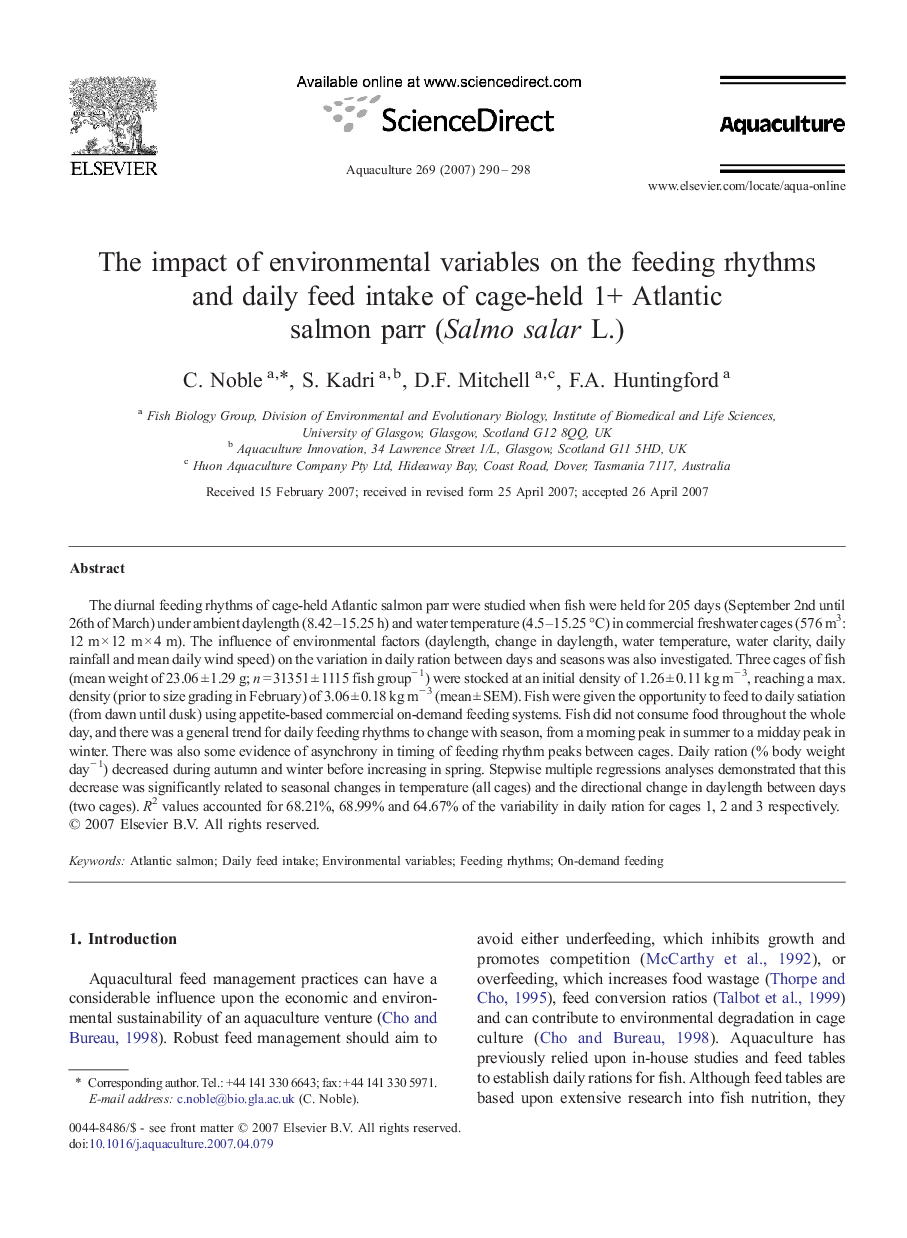| Article ID | Journal | Published Year | Pages | File Type |
|---|---|---|---|---|
| 2425284 | Aquaculture | 2007 | 9 Pages |
The diurnal feeding rhythms of cage-held Atlantic salmon parr were studied when fish were held for 205 days (September 2nd until 26th of March) under ambient daylength (8.42–15.25 h) and water temperature (4.5–15.25 °C) in commercial freshwater cages (576 m3: 12 m × 12 m × 4 m). The influence of environmental factors (daylength, change in daylength, water temperature, water clarity, daily rainfall and mean daily wind speed) on the variation in daily ration between days and seasons was also investigated. Three cages of fish (mean weight of 23.06 ± 1.29 g; n = 31351 ± 1115 fish group− 1) were stocked at an initial density of 1.26 ± 0.11 kg m− 3, reaching a max. density (prior to size grading in February) of 3.06 ± 0.18 kg m− 3 (mean ± SEM). Fish were given the opportunity to feed to daily satiation (from dawn until dusk) using appetite-based commercial on-demand feeding systems. Fish did not consume food throughout the whole day, and there was a general trend for daily feeding rhythms to change with season, from a morning peak in summer to a midday peak in winter. There was also some evidence of asynchrony in timing of feeding rhythm peaks between cages. Daily ration (% body weight day− 1) decreased during autumn and winter before increasing in spring. Stepwise multiple regressions analyses demonstrated that this decrease was significantly related to seasonal changes in temperature (all cages) and the directional change in daylength between days (two cages). R2 values accounted for 68.21%, 68.99% and 64.67% of the variability in daily ration for cages 1, 2 and 3 respectively.
